
In the glass slab experiment, the correct placement of the protractor (or ‘dec’), for measuring the angles of incidence and emergence, is shown in which figure?
(a)
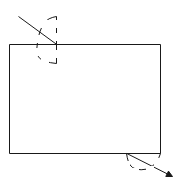
(b)
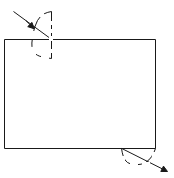
(c)
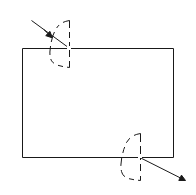
(d)
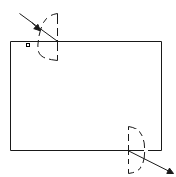




Answer
552.6k+ views
Hint: The following experiment uses the phenomenon of refraction to calculate angle of incidence, angle of refraction and angle of emergence and analyse the results. We observe the bending of light by trying to trace the path of the ray using pencil and a few pins.
Complete step-by-step solution:
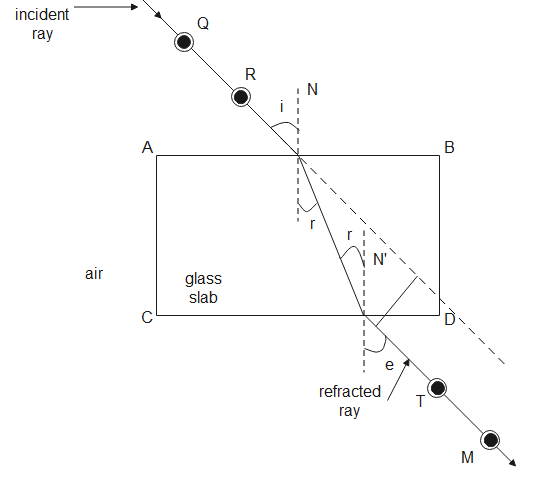
In the experiment, we take a glass slab, a white sheet of paper, 4-5 pins, thumb pins, a soft board, a protractor, scale and a pencil.
Take a white sheet of paper and fix it to the soft board using thumb pins.
Place the glass slab on the white sheet and draw an outline of it on the paper. Let ABCD be the rectangle drawn. Mark a point on AB, say P and draw a normal PE.
With the help of a protractor, draw an angle, say ${{30}^{o}}$ while keeping the base of the protractor on the normal. Place two pins on the ray and mark them as Q and R.
Now place the glass slab on ABCD and see through it to the side CD. Mark two points say T and M and remove the glass slab. When seen through the glass slab, the points Q, R, T and M must be in a straight line. Remove the pins and circle the points.
Join points TM and extend it to meet the side CD. At the point where it meets CD, draw a normal. Keep the base of the protractor and measure the angle formed between the normal and TM.
The angle formed between the normal and side CD is the angle of emergence and the angle formed at side AB is the angle of incidence. The angle of refraction can be calculated using the formula
$\mu =\dfrac{\angle i}{\angle r}$
Here, $\mu $ is the refractive index of the glass slab
$\angle i$ is the incident angle
$\angle r$ is the angle of refraction
Therefore, the protractor must be placed on the normal because the angle of incidence, refraction and emergence are made by the light ray with the normal.
Hence, the correct option is (d).
Note:
Make sure that the glass slab has smooth faces. Prefer to choose an angle of incidence between ${{30}^{o}}\,and\,{{60}^{o}}$. The placement of the protractor must be correct in order to get the correct measurements. There shouldn’t be any air bubbles in the glass slab.
Complete step-by-step solution:

In the experiment, we take a glass slab, a white sheet of paper, 4-5 pins, thumb pins, a soft board, a protractor, scale and a pencil.
Take a white sheet of paper and fix it to the soft board using thumb pins.
Place the glass slab on the white sheet and draw an outline of it on the paper. Let ABCD be the rectangle drawn. Mark a point on AB, say P and draw a normal PE.
With the help of a protractor, draw an angle, say ${{30}^{o}}$ while keeping the base of the protractor on the normal. Place two pins on the ray and mark them as Q and R.
Now place the glass slab on ABCD and see through it to the side CD. Mark two points say T and M and remove the glass slab. When seen through the glass slab, the points Q, R, T and M must be in a straight line. Remove the pins and circle the points.
Join points TM and extend it to meet the side CD. At the point where it meets CD, draw a normal. Keep the base of the protractor and measure the angle formed between the normal and TM.
The angle formed between the normal and side CD is the angle of emergence and the angle formed at side AB is the angle of incidence. The angle of refraction can be calculated using the formula
$\mu =\dfrac{\angle i}{\angle r}$
Here, $\mu $ is the refractive index of the glass slab
$\angle i$ is the incident angle
$\angle r$ is the angle of refraction
Therefore, the protractor must be placed on the normal because the angle of incidence, refraction and emergence are made by the light ray with the normal.
Hence, the correct option is (d).
Note:
Make sure that the glass slab has smooth faces. Prefer to choose an angle of incidence between ${{30}^{o}}\,and\,{{60}^{o}}$. The placement of the protractor must be correct in order to get the correct measurements. There shouldn’t be any air bubbles in the glass slab.
Recently Updated Pages
Master Class 12 English: Engaging Questions & Answers for Success

Master Class 12 Business Studies: Engaging Questions & Answers for Success

Master Class 12 Economics: Engaging Questions & Answers for Success

Master Class 12 Social Science: Engaging Questions & Answers for Success

Master Class 12 Maths: Engaging Questions & Answers for Success

Master Class 12 Chemistry: Engaging Questions & Answers for Success

Trending doubts
Draw a labelled sketch of the human eye class 12 physics CBSE

Explain sex determination in humans with line diag class 12 biology CBSE

The pH of the pancreatic juice is A 64 B 86 C 120 D class 12 biology CBSE

Explain sex determination in humans with the help of class 12 biology CBSE

Differentiate between homogeneous and heterogeneous class 12 chemistry CBSE

Which state in India is known as the Granary of India class 12 social science CBSE




